Lighter Spelt Apple Streusel Cake (with a simple drizzle)
This lighter spelt apple streusel cake first appeared on my former blog, The Culinary Jumble. The recipe has been tweaked to use spelt flour and the images are new. For more information about changes to the recipe, please scroll down a little further.
This cake is the softest, fluffiest cake I have ever made. And it’s that way every time I bake it. What’s perhaps surprising is that it isn’t laden with white sugar and butter. In fact, the cake has just a little more than 100g (½ cup) of brown sugar and under 100g butter (less than ½ cup).
I am sure you will agree, the cake is a beauty to look at, and it always feel so amazing when a cake tastes as good as it looks, and it’s a little lighter. The outside of the cake is delightfully crispy, while the inside is insanely fluffy.
Although this is a fairly small cake (made in a 6″ / 18cm springform pan) it is impressively tall. This is because it has a deep layer of apple streusel both in the middle and adorning the top. The apples are chopped very fine, so they blend into the sponge deliciously. The cake is topped with a simple drizzle, but this can be omitted (but why would you want to do that?).
What is streusel?
Streusel is often used as a topping for muffins, cakes, pies and even bread. The word streusel comes from streuen, which is German for sprinkle. Streusel is a mixture of flour, butter and sugar, but you can add anything to the basics, such as cinnamon, nuts and even chocolate chips.
Many streusels are prepared in the same way as a crumble, where cold butter is cut into the flour and sugar and then sprinkled over the top of whatever you are baking. Others (like mine) use melted butter, which is stirred into the dry ingredients then dolloped over the cake (or whatever else you are using it for).
Why should you use buttermilk in cakes?
I am not one for telling others what they should do, but when it comes to buttermilk, I am going to stand on my soapbox and rant until you listen. Seriously though, buttermilk in cakes is a gaaaame changer. Most cakes call for liquid, often milk, so using buttermilk as an alternative is not difficult. Using buttermilk in a cake brings about a heavenly, light and fluffy sponge. Like all baking, chemical reactions are going on when your ingredients are combined and then baked. The science behind making cakes fluffy is due to the buttermilk (which is slightly acidic) reacting with the baking soda, producing carbon dioxide, resulting in a lighter cake.
But it’s not only the texture that is affected: buttermilk enhances the flavour of the cake, too. Like Greek yoghurt, using buttermilk introduces a slight tang to the cake and strangely, also reduces the sweetness. This lighter spelt apple streusel cake is perfectly sweet, and you could easily eat three slices without even realizing. And yes, I am speaking from personal experience.
How to make your own buttermilk
I have to say that I am late to the game where buttermilk is concerned. We can’t get it in Sweden (that I am aware of), and I’ve often substituted Greek yoghurt whenever buttermilk was called for. However, once, I realised just how simple it was to create your own buttermilk at home, I never looked back.
For this cake, I used one tablespoon of white wine vinegar and topped up the required amount with milk. The vinegar causes the milk to curdle, which thickens it up. It’s a quick process, and my milk started to thicken within a minute. Although I use vinegar, you can use other acidic agents such as lemon juice or even cream of tartar.
Off on a tangent just a bit, as I went to get my bottle of white wine vinegar out of the cupboard this morning, I nearly dropped it with fright. A gelatinous, alien-like creature had somehow found its way inside the bottle:
One quick Google, and the answer was something called a mother of vinegar (or sometimes, vinegar mother). I am not sure about you, but knowing it was called a mother, did little to relieve my squeamishness. I had never heard of it, but it feels kinda cool to know that my vinegar is a healthy specimen.
Can this cake be adapted?
Yes! What I love most about my cakes is how easy they are to adapt.
-
Flour
I have been blogging for nearly nine years, and many of my older recipes used regular or gluten free flour. I’ve adapted my favourites to use spelt, so I have personal experience of creating the same recipe using various different flours. The original cake I made (for The Culinary Jumble) used a gluten free flour blend. Whatever flour you use, all you need to do is a straight swap, so it really couldn’t be any easier.
-
Sugar
I’ve used brown sugar in this cake, but you can easily use white sugar or even coconut sugar.
-
Apples
I used Granny Smith’s apples because they are sharp and have tonnes of flavour. However, you could use any apple you like. In fact, you don’t need to include apples at all. Either omit them or use raisins, sultanas, cranberries or even blueberries instead.
-
Buttermilk
Although I’ve absolutely sung the praises of buttermilk above, you can substitute it with sour cream, creme fraiche (I used this in the original recipe) or Greek yoghurt. Obviously, some differences may be noticed, but these should not interfere with the deliciousness of the cake at all.
I hope you like this recipe for apple streusel cake! Apple season is truly upon us (although in Sweden, it has only just started to cool and we’re already into October). If you like apples in your cakes or desserts, you might like:
Caramel apple and blueberry smulpaj
12 Beautiful inspiring autumn apple recipes
Lighter Spelt Apple Streusel Cake (with a simple drizzle)
Ingredients
Streusel Topping:
- 90g (¾ cup) oat flour (see note 1)
- 60g (⅓ cup) brown sugar
- 1 teaspoon cinnamon
- ¼ teaspoon nutmeg
- 50g (3 tbsp + 2 tsp) butter (melted)
- 1 large apple (very finely chopped)
Cake:
- 60g (4 tbs) butter (softened)
- 70g (⅓ cup + 1 tbs) brown sugar
- 1 egg
- 160ml (⅓ cup) buttermilk (see note 2)
- 175g (1½ cups) spelt flour (see note 3)
- 1 teaspoon baking powder
- ½ teaspoon baking soda
- 1 teaspoon cinnamon
- 1 teaspoon vanilla sugar (or extract)
Drizzle:
- ½ tablespoon milk
- icing sugar
Instructions
Streusel:
- Chop the apple finely (I used a food processor).
- Melt the butter.
- Mix the brown sugar, oat flour, cinnamon, nutmeg, apple, and vanilla sugar in a bowl, then add in the butter.
- Stir until well combined then set to one side (please note: it is quite a soft mixture, but as the butter firms up, the streusel becomes more like a crumble topping. However, it is never crumbly).
Cake:
- Pre-heat the oven to 175°C (350°F) and grease / line a small springform pan (mine is 18cm/6").
- In a stand mixer (or by hand) cream the butter and sugar together until light and fluffy.
- Add in the egg and continue to mix just until the egg is well incorporated.
- Add the buttermilk.
- Combine the flour, baking powder, baking soda, cinnamon and vanilla sugar. Then, add to the wet ingredients, and work the mixture just until everything pulls together.
- Pour half of the batter into the prepared tin and using a spoon, dollop half the streusel mixture over the top. As mentioned above, it isn't crumbly, so just push it around with a knife so that there is an even, and fairly flat, coverage.
- Top with the remaining batter and then the remaining streusel (repeating the process above).
- Bake for around 45-50 minutes on a lower rack in the oven, until an inserted skewer comes out clean. Remove from the oven and allow to cool completely.
Drizzle:
- Pour the milk to a small bowl.
- Add as much icing sugar as necessary to make a thick drizzle.
- Remove the sides of the springform and then drizzle icing over the cake. Cut into slices and enjoy!
Notes
- You don't need to use oat flour if it's not something you have at home. Just substitute with the flour you are using for your cake.
- If you don't have buttermilk, you can either substitute it with Greek yoghurt, creme fraiche or even sour cream. To make your own buttermilk, add one tablespoon of lemon juice or white wine vinegar and top it up with milk until you have 160ml (⅓ cup).
- You can use any kind of flour in place of spelt (without any need to amend the specified amount).
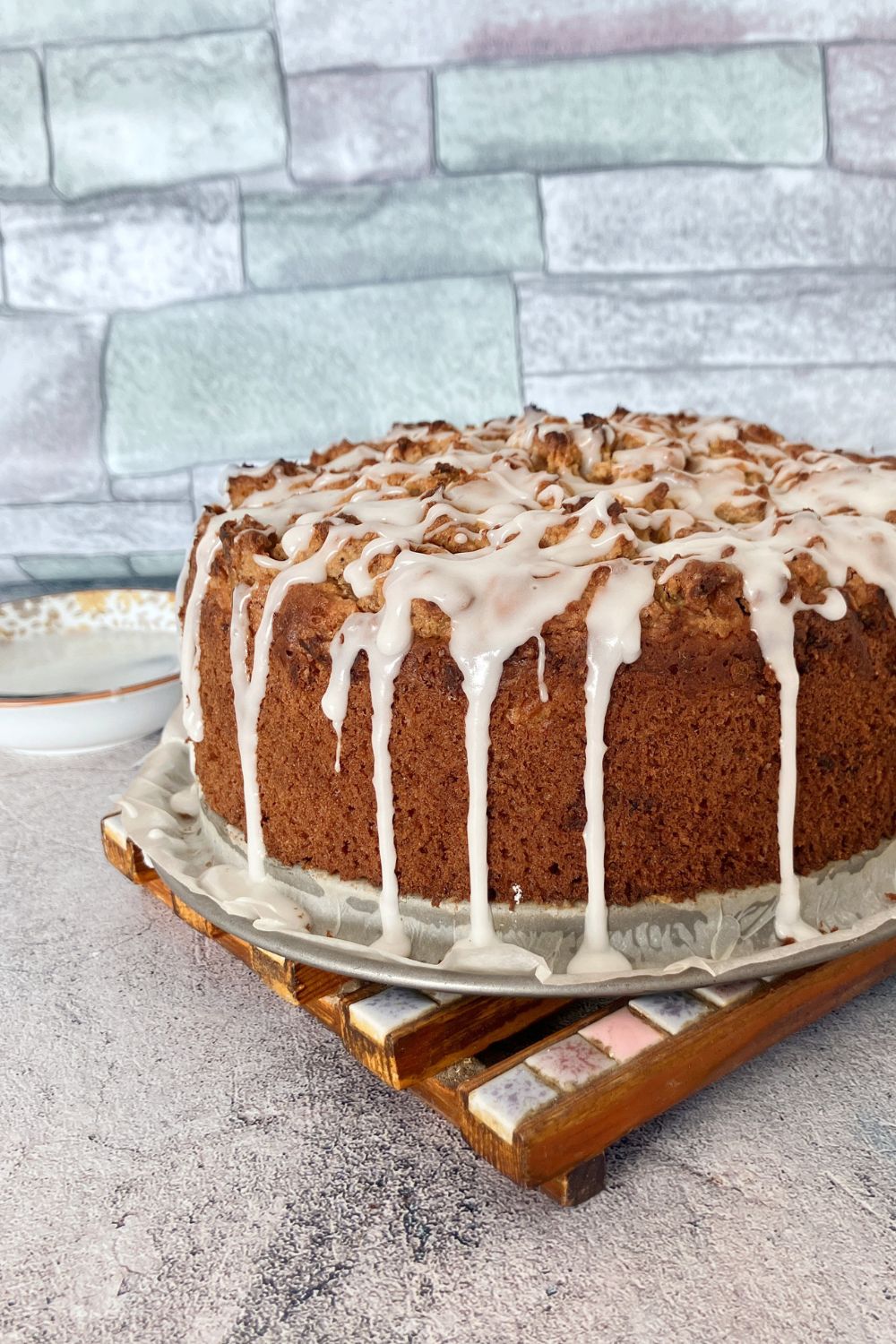
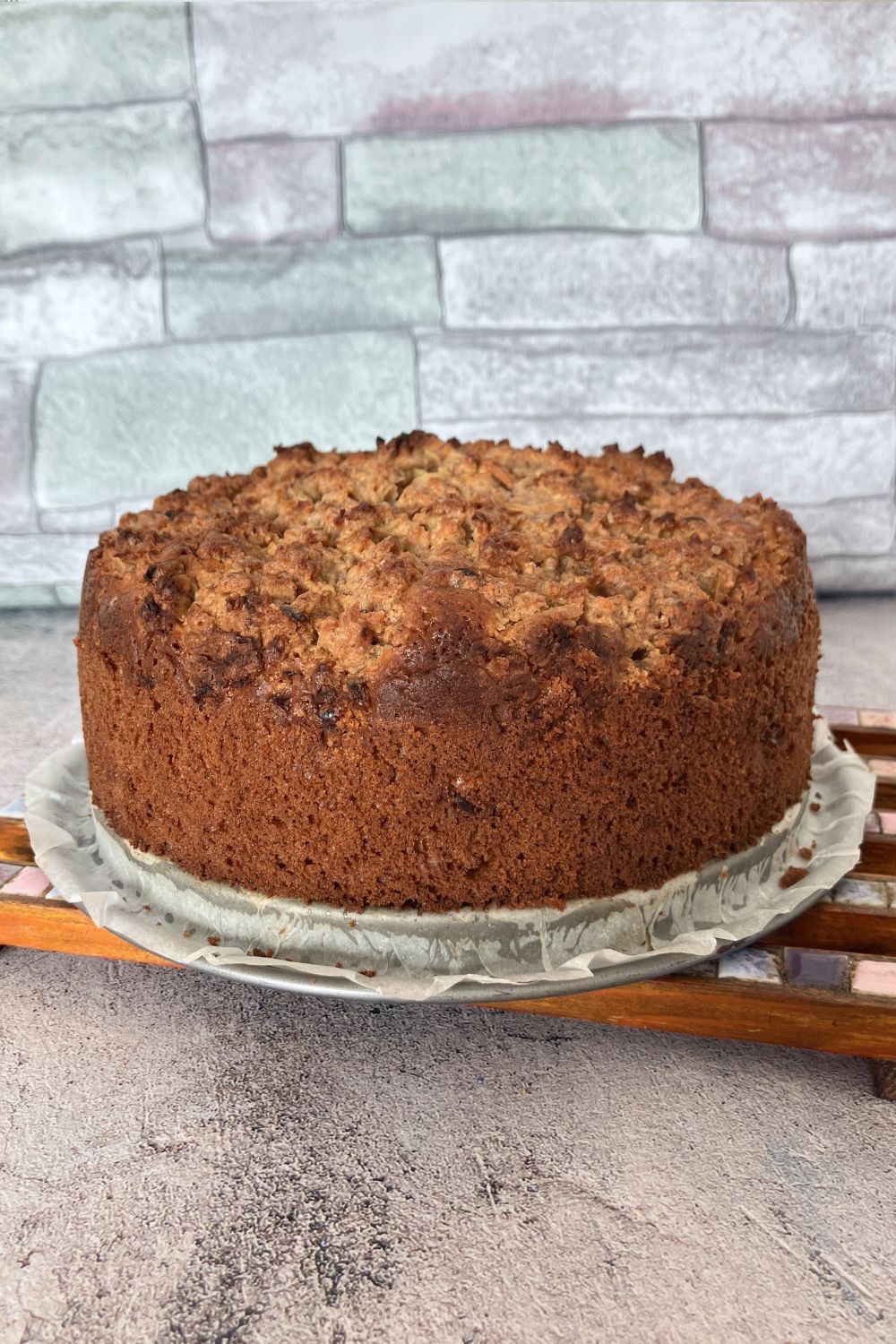
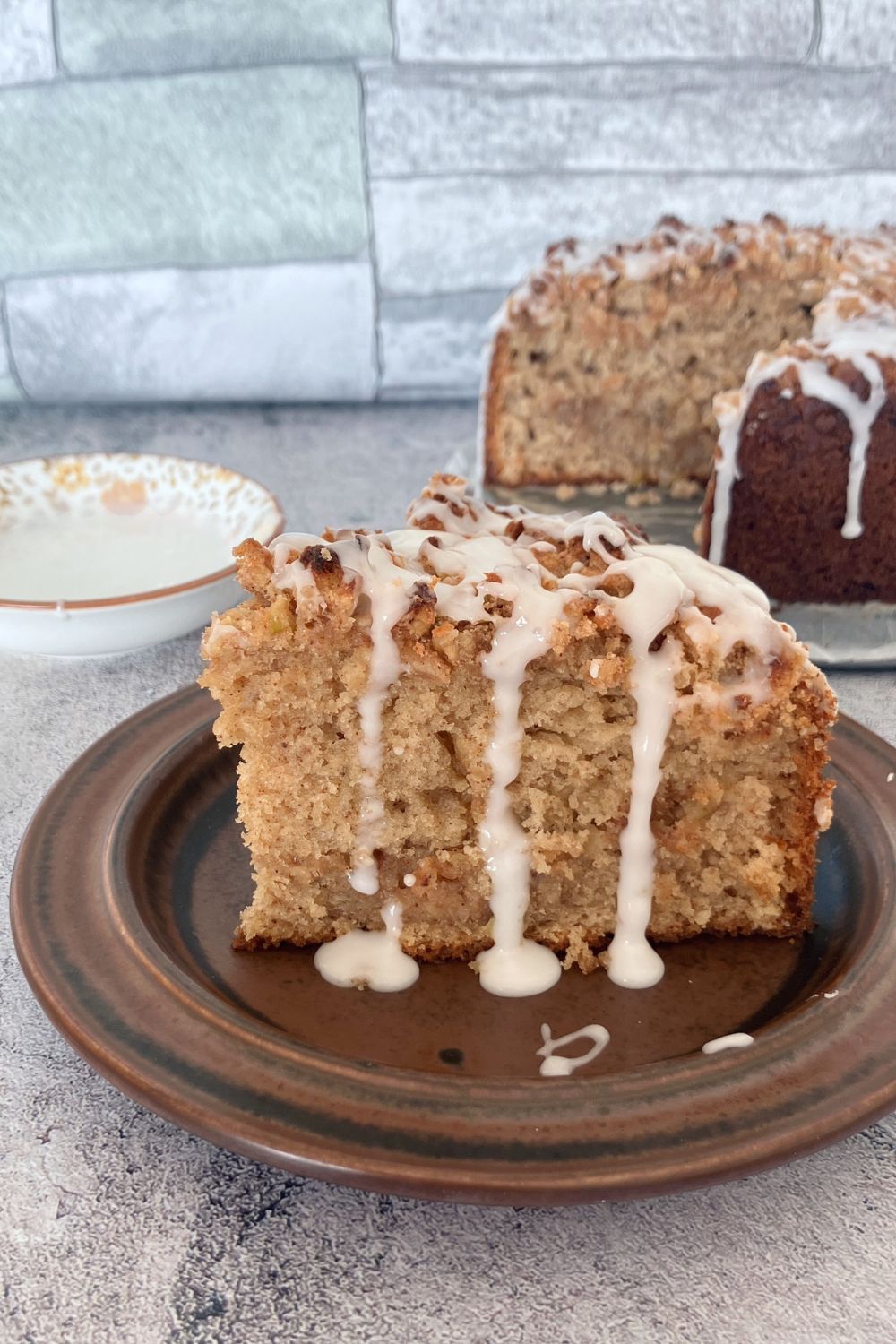
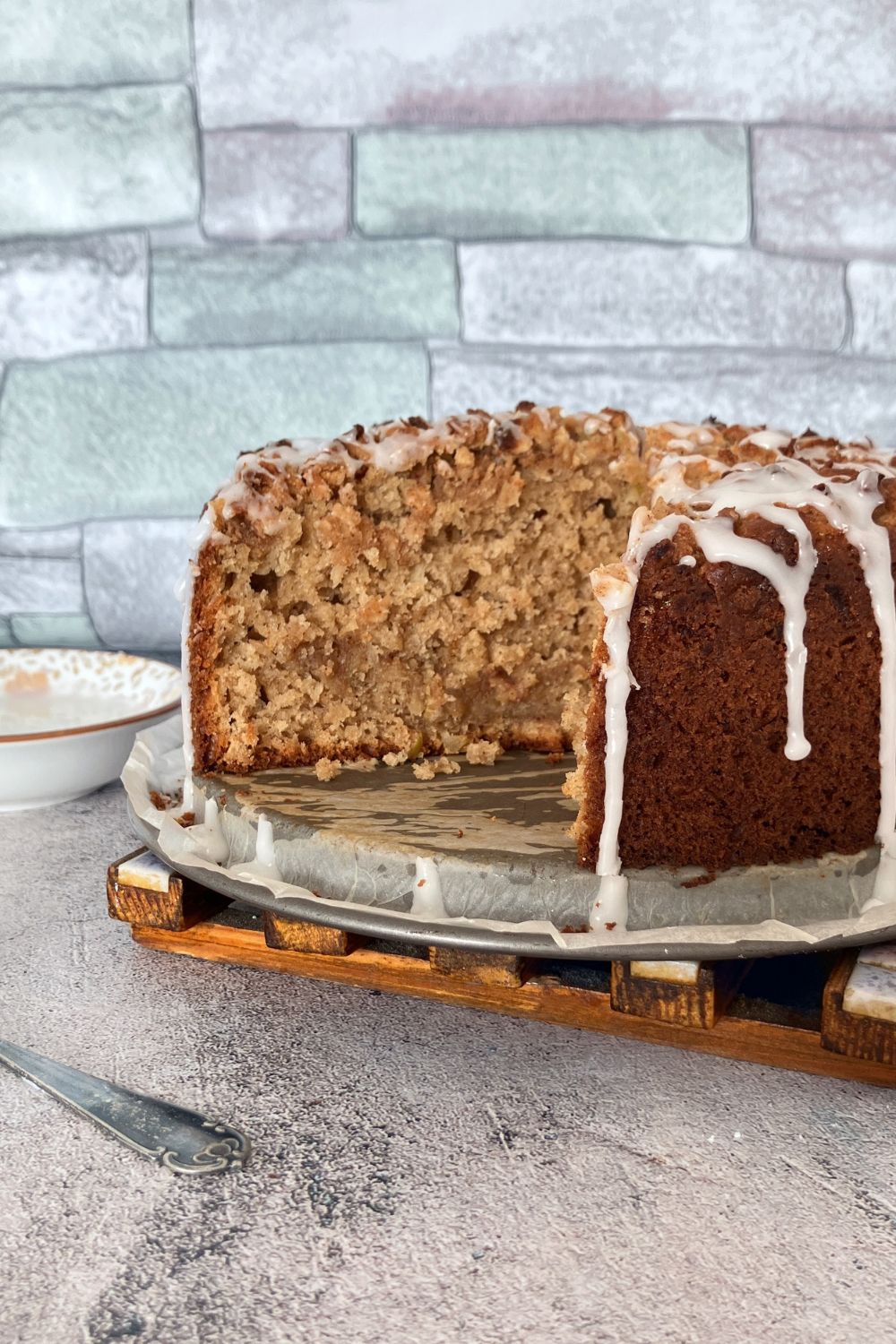

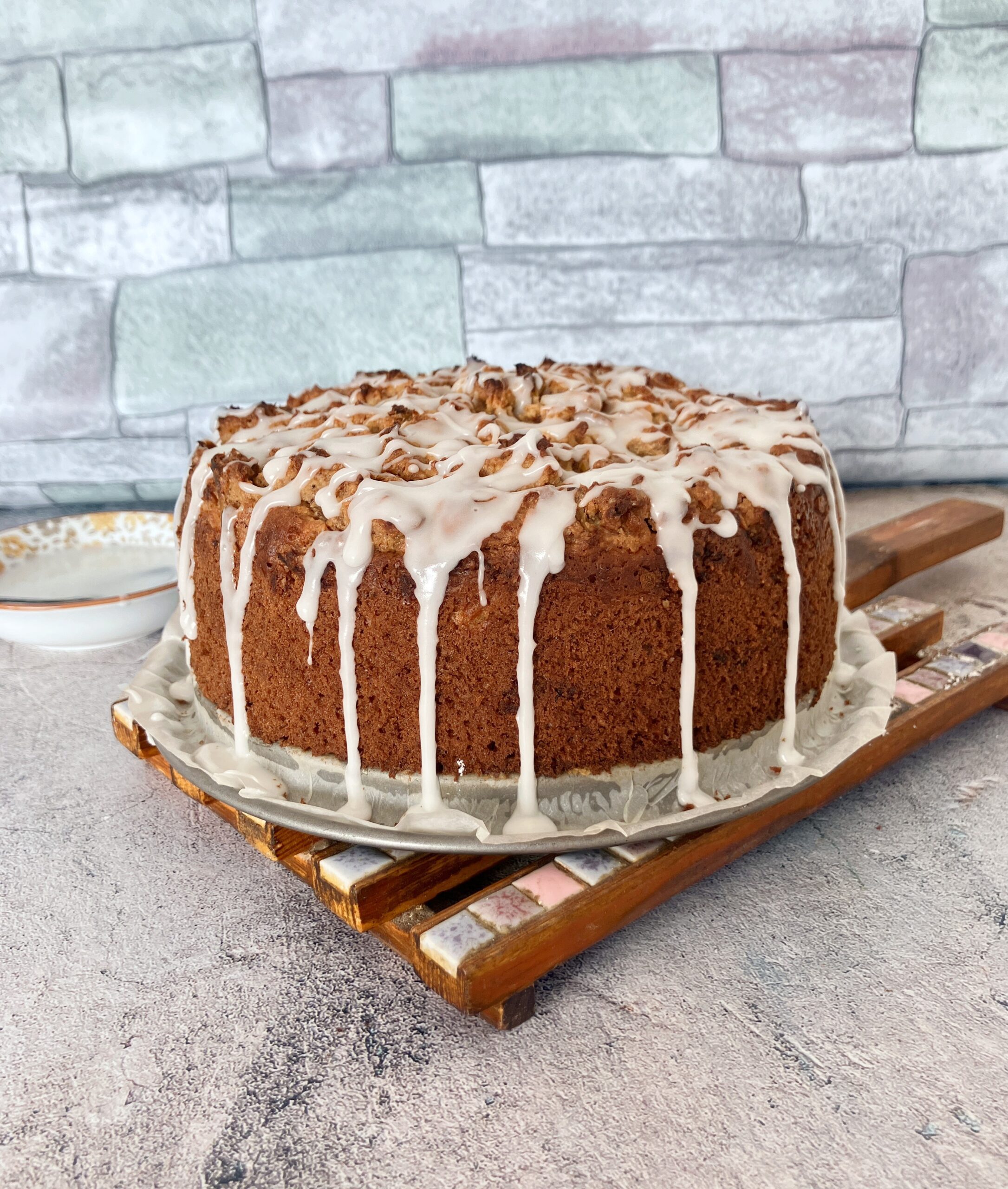
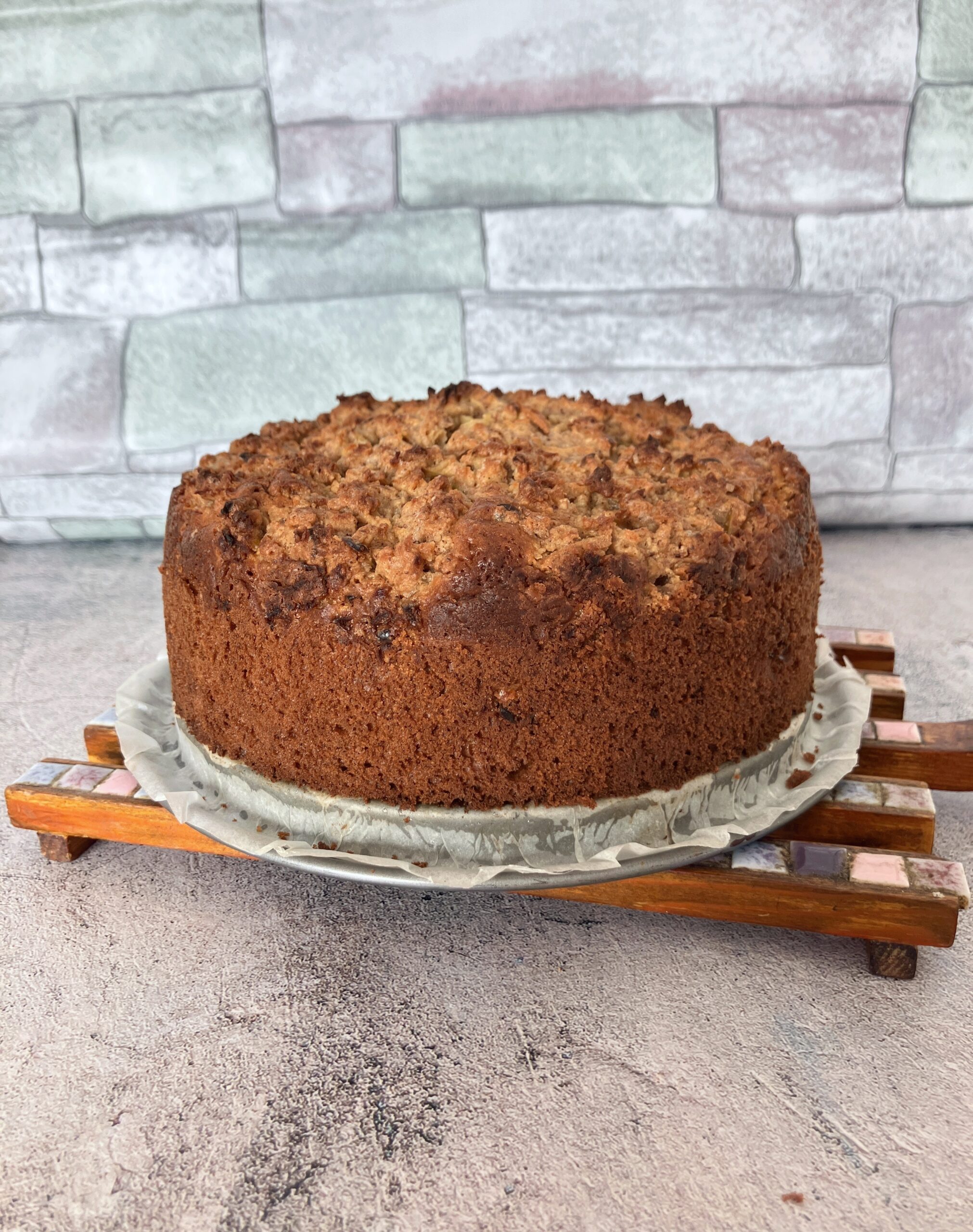
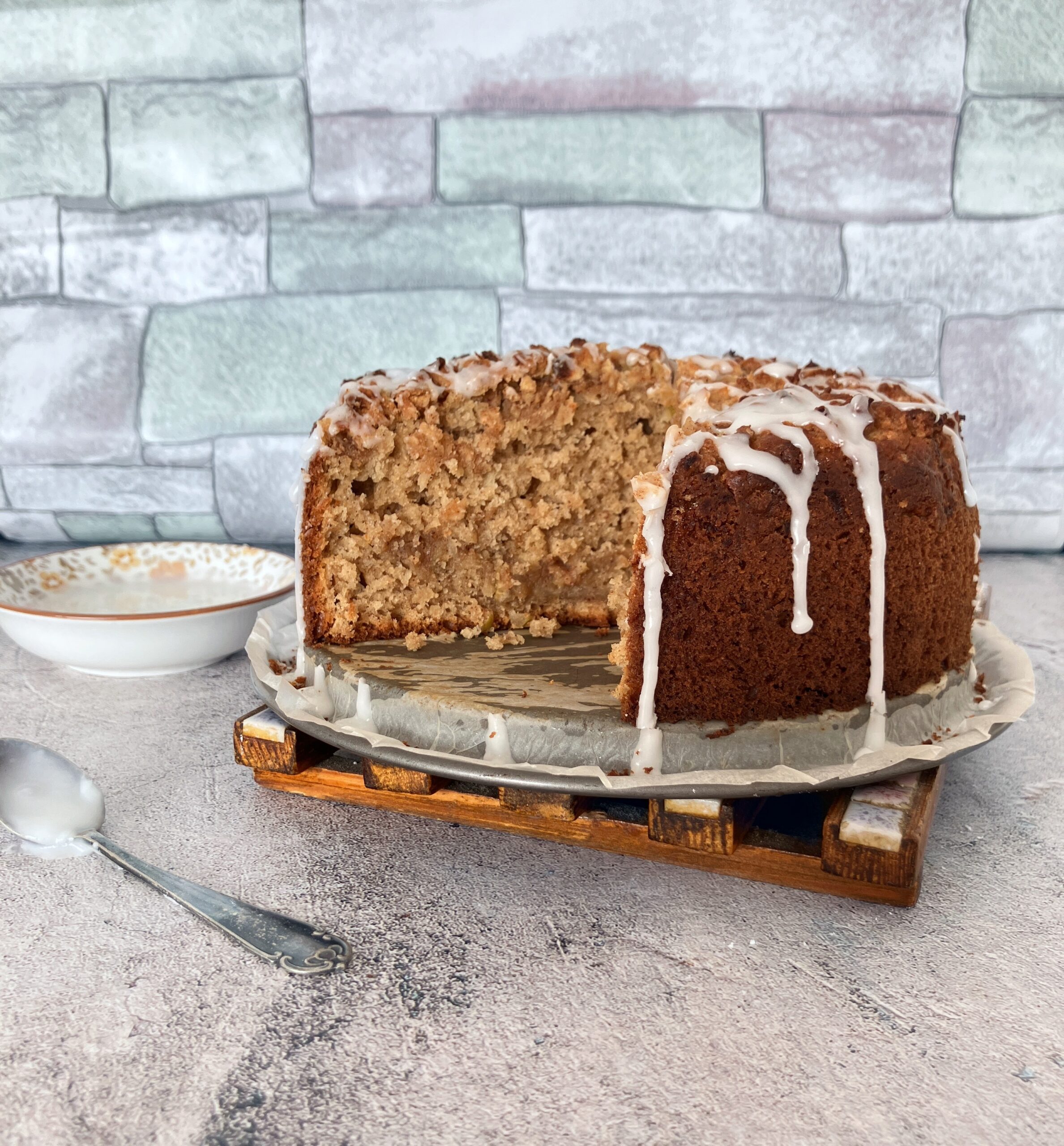
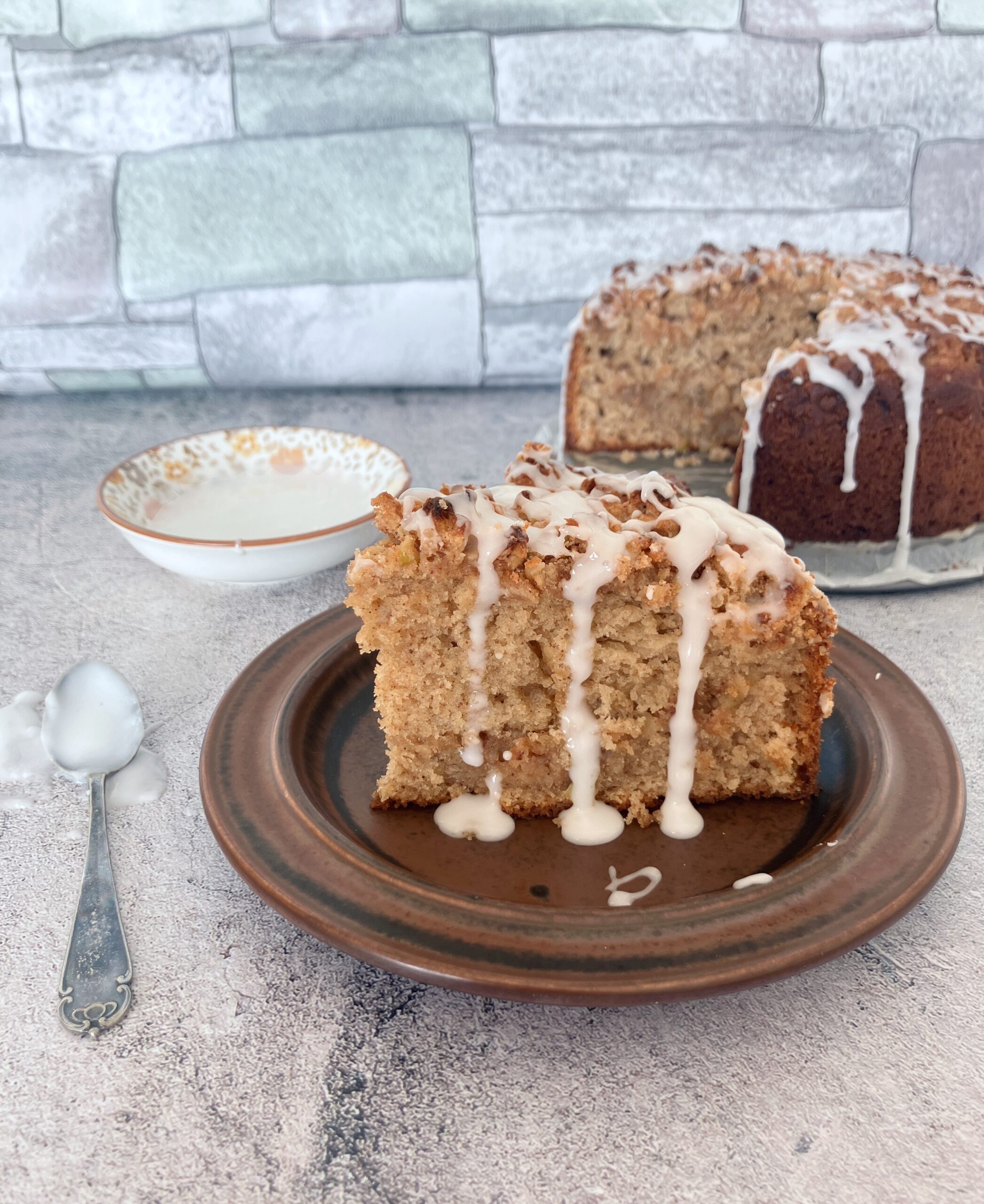
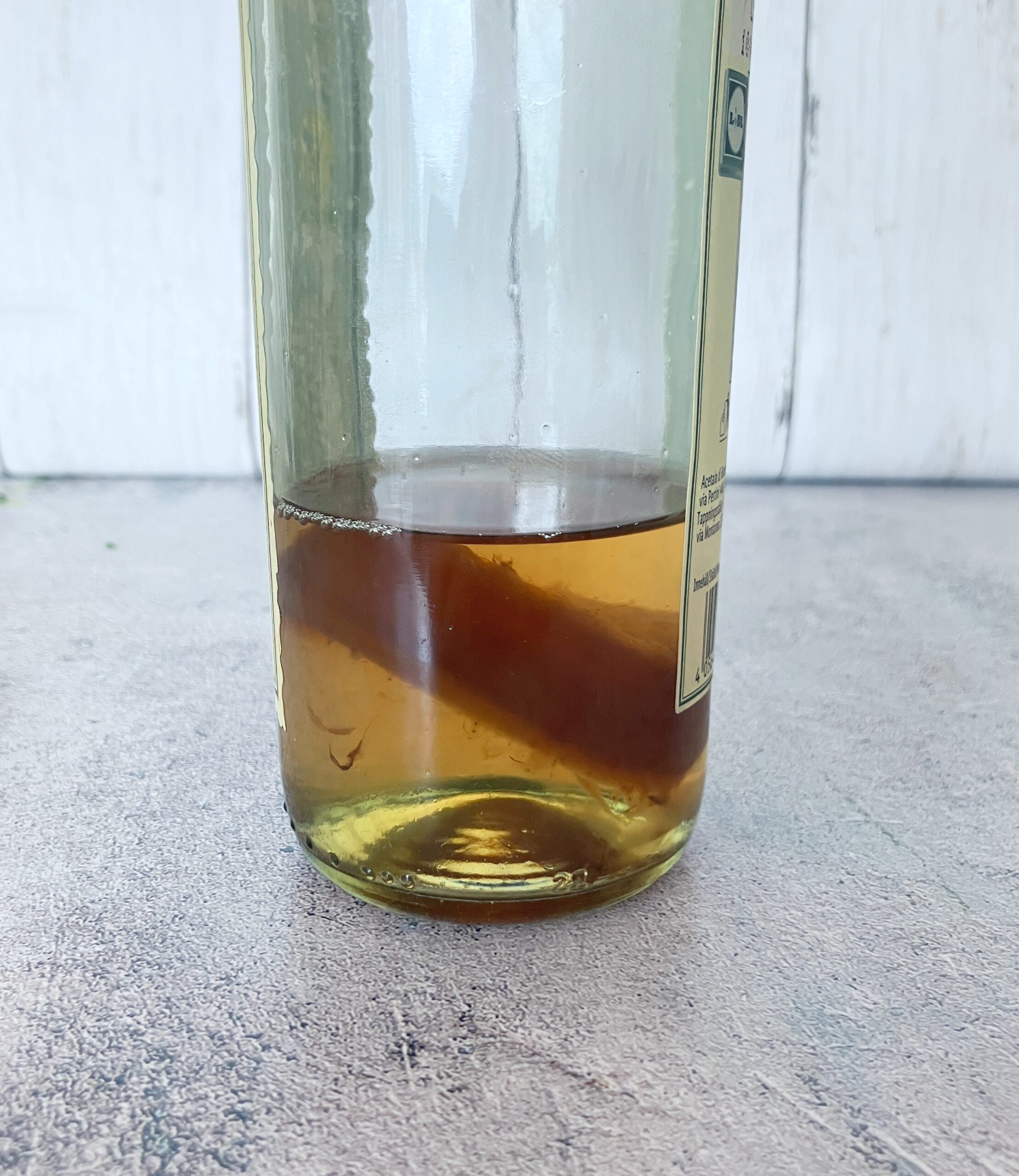
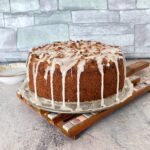
3 thoughts on “Lighter Spelt Apple Streusel Cake (with a simple drizzle)”